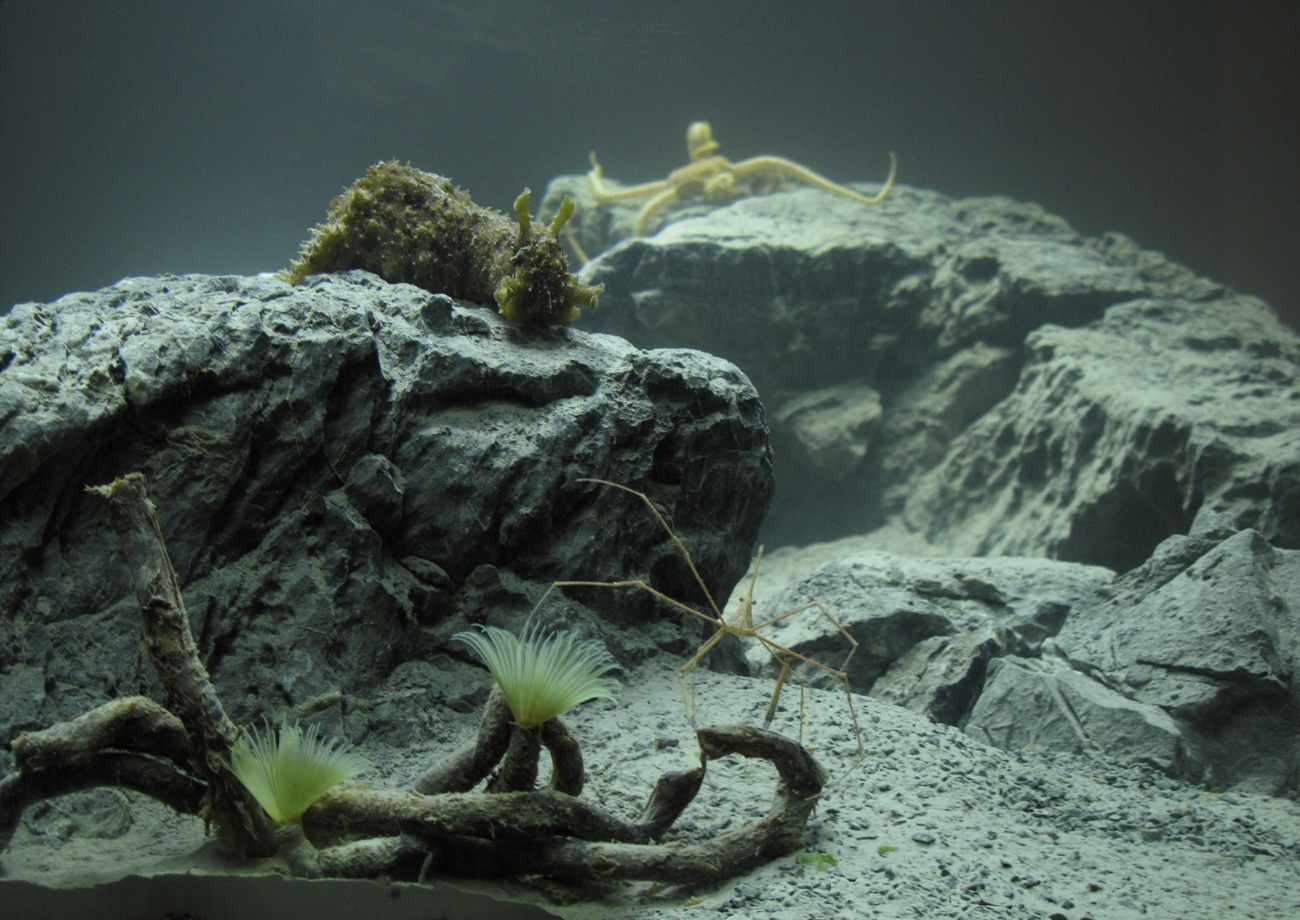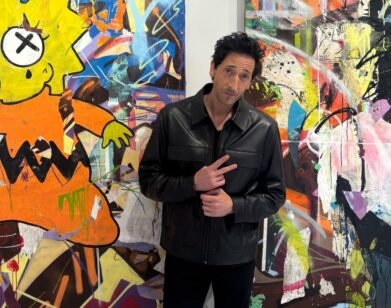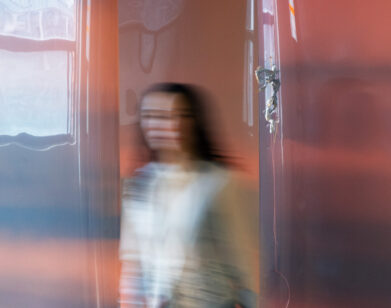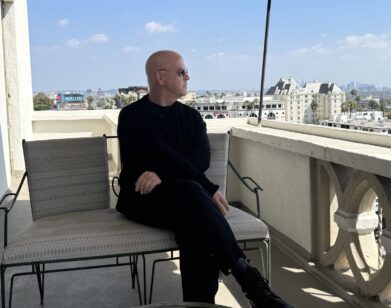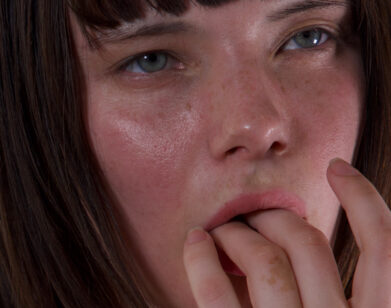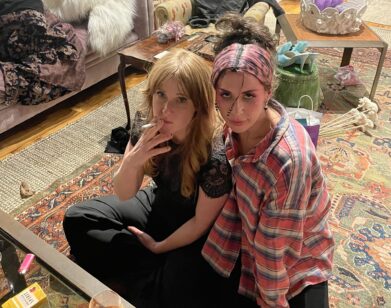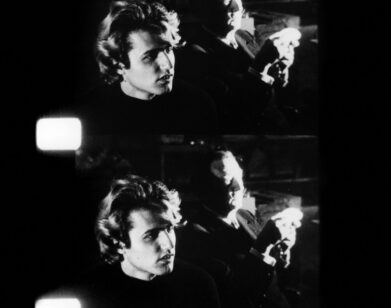Pierre Huyghe
No fantasy is safe in the hands of 48-year-old French artist Pierre Huyghe. But that’s fine because neither is any reality. This is an artist who has systematically poked, provoked, and perverted our most stable structures in this world (national holidays, modernist architecture) as well as the safe refuge of our “other” worlds (fairy-tale lands, computer-generated virtual realms). Huyghe has a talent for creating a cultural confrontation out of the most unexpected elements, and that often happens in surprising locations. In fact, in the last decade Huyghe’s work has consistently been found outside of the museum. In 2005 it was found on Central Park’s Wollman skating rink, in a musical performance inspired by a trip to Antarctica. In 2008 it was found literally growing in the Sydney Opera House for a 24-hour period, when he transformed the concert hall into a mystical, fog-filled arboretum. Last year, Huyghe even took over gardening duties at Madrid’s Crystal Palace for the Reina Sofia, planting a calendar’s worth of flora representing different seasons and holidays throughout the year and then letting them battle for ground rights.
Naturally, when it was time for Huyghe to return to the museum, he did so in a shocking and invasive way: In 2009 he began a yearlong project inside the vacant Musée National des Arts et Traditions Populaires in Paris, turning its halls, galleries, stairwells, cafeteria, and offices into sites for bizarre spectacles both rashly improvised and brilliantly strategic. Utilizing a cast of actors, performers, and public eyewitnesses, Huyghe created a schizophrenic, immersive atmosphere that flashed room by room from the dancing of a Michael Jackson impersonator to a trial to defend the rights of avatars. Along the way there was a couple having sex, supermodel Audrey Marnay, and, perhaps most ominously, humans just there, existing in some narrative free-fall. This month at New York’s Marian Goodman Gallery, the resultant film footage of this house of Huyghe will appear; of course, it is not so much a documentary as its own discrete work called The Host and The Cloud, complete with the introduction of an animated rabbit wandering through the frames. Huyghe is also showing a new series of aquariums, curated with an eye for disturbing aquatic motifs. While preparing for the exhibit, Huyghe sat down with his friend and fellow artist Rirkrit Tiravanija over food and wine to discuss the film, the museum, and creating a
morally complex universe inside a fish tank.
RIRKRIT TIRAVANIJA: I understand that the film you’re working on comes from a series of events you orchestrated over the course of a year.
PIERRE HUYGHE: Yes. It all happens in a museum that closed five years ago. It was the French folk museum [Musée National des Arts et Traditions Populaires in Paris], which is near an amusement park called Le Jardin d’Acclimatation. I discovered it by coincidence. Obviously I was already thinking about a project like this before I came across the museum. You don’t just find an empty museum and say, “I should do something here.” I was looking for another kind of venue or exhibition format. I was trying to find a site where something could happen over a long period of time—something that could slowly transform itself and the place as it went. And I was also trying to stand out of the art-world system. Strangely enough, I stumbled on this vacant museum.
TIRAVANIJA: But isn’t a museum still part of the art-world system?
HUYGHE: Not really. But I had the chance to play with a ghost of the museum. The function and the institution are gone—it’s closed—but there is still the building. There is still a gallery, a theater, a restaurant, an entrance, and storage. Everything is there. I was looking for something between an experiment and an extended ritual. I asked 15 actors to be in this museum and take the position of the museum’s personnel. I put this small group under certain conditions and influences, interpreted by another group of actors or by real professional performers, like a magician, a psychic, a model, a hypnotist, a singer, a psycho-dramaturge. . . . The 15 actors were not acting, they were just there facing different kinds of spectacles and situations and reacting to them.
TIRAVANIJA: These actors knew they were going to have to work for an entire year? That’s a long commitment.
HUYGHE: It was on and off over the course of a year, but we worked more intensively for the live performance on three occasions: Halloween, Valentine’s Day, and May Day. On those days, 50 people were invited to witness this live experiment. The actors were moving throughout the entire building, where different events and experiences would happen around them—like those performers I was talking about. Everything that happened was real. No reactions were faked. There were a lot of moments where even I didn’t know the outcome.
TIRAVANIJA: Some parts were scripted and some weren’t. But if you worked with the actors over an entire year, didn’t they know what to expect?
HUYGHE: Not exactly. You can go to a psychoanalyst one day and then go the next day and something else will come out. So, yes, there was some preparation. But still, when a person gets hypnotized, you don’t really know what the outcome will be. I have no idea what they will say, so there is a space for accidents. There are about 40 different situations going on in the museum at once. As a witness of the experiment you wander between them—the hypnotist, the magician, the reenactment of the trial of Action Directe [a French left-wing terrorist group active in the ’80s]. It’s really a journey. You can fall on the Michael Jackson impersonator dancing, and later you come across a museum “employee” repeating the dance steps. No one knows what will show up next as they move through the museum. What interests me the most is a specific moment, after the actor or the “employee” has an encounter, let’s say with the magician, or seeing a couple having sex, or talking to a child, suddenly they find themselves having nothing to do for a long period of time. At that moment, this person will have no idea that they have dropped out of a script or an improvisation. They are part of something but not playing anything. To me that’s the most interesting moment. For instance, there is the courtroom trial reenactment. A court is a theater. When you go into a theater and sit in your chair, you know that the thing in front of you is scripted. But if you turn and see a woman blowing her nose, or walk out into the street, that’s not scripted. In this piece, one room may be scripted and the next room may not be. You never know which. The whole project is like a garden, where each plant is a situation, a fragment of our culture or recent history. You can’t follow every growing element.
TIRAVANIJA: Did the actors ever tell you how they felt about performing in this project?
HUYGHE: For them there was a strong psychological commitment, which they said they really loved. They had to play with themselves, with their expectations. But it’s not even playing. Every condition of that museum made it impossible to know when you were on or off. For example, in the hall a teenager is listening to music on her headphones for three hours and then she takes them off and starts talking about the first time she was in love. If an actor is there at that moment, he will listen to her. Otherwise, no one will experience this unique situation. In a semi-metaphoric way, the museum is a collective memory, a mind, something that links us to culture and humanity. It is also a portrait of someone who never appears.
TIRAVANIJA: In the film you’ve made of the project, does any subject appear?
HUYGHE: The film documented the live experiment, but in postproduction an animation was added in. It’s an animated rabbit, an imaginary character. The rabbit is the alter ego of the absent subject. The rabbit works like a wandering explorer. He is watching just as the witnesses are.
TIRAVANIJA: But isn’t the rabbit really you, Pierre? Maybe this whole project is a portrait of you.
HUYGHE: [laughs] I have been revealed.
TIRAVANIJA: You’ve been caught.
HUYGHE: Truthfully, I’m not sure that is correct but I love that interpretation—that we artists never go out of self-portrait. Let me ask you, do you know Thriller?
TIRAVANIJA: Um, yeah!
HUYGHE: Have you ever been in love?
TIRAVANIJA: Uh-huh.
HUYGHE: What I’m trying to say is that it is as personal as it is common.
TIRAVANIJA: Well, on one hand, all work comes through an individual artist. But that doesn’t mean it isn’t universal. Do you feel like certain things about you come out in your work?
HUYGHE: I think so. I could not say “we” anymore. “We” would be too pretentious. When I look at something, I ask myself more and more, Who speaks? When I know who is speaking, I see that there is a commitment. I need to know there is some commitment. I need to find an author. “I” can also be polyphonic, fictional, inhabited by a multitude of characters, be right or wrong or at fault or corrupted. But that’s more “the self” than “me, me, me.” It’s problematic. There are times to say “we.”
TIRAVANIJA: Along with the film, you are going to show these aquarium seascapes—or underworldscapes—of life. I suppose you’ve assigned characters to those organisms living in each tank.
HUYGHE: Yes, but there’s no script or moral attached to these entities, like there are with Disney characters. They are sea animals, so they’re not actors. Still, they are under certain conditions, and they are characters under those conditions. These conditions are related to human emotions or behaviors. And humans from different cultures will relate to them differently. Like if you see a snake or a spider . . .
TIRAVANIJA: There are some children who have no fear of spiders or snakes. They have them as pets.
HUYGHE: Fear comes from the unknown. Once you know, then, whatever.
TIRAVANIJA: It seems like one constant in all of your projects is that you’re building a landscape.
HUYGHE: That’s true. I’ve never thought so much about that aspect, but you’re right. I’ve recently done a garden, a seascape, a museumscape. . . . And in all these places I start with a set of conditions. The entities that inhabit them are partly real and partly fictional, partly signs or symbols, but they are still living organisms, whether it be a human, an animal, or a plant. With the garden I planted for the Reina Sofia, each plant related to different celebrations along the calendar—Christmas with evergreen trees, Valentine’s Day with roses, Halloween with pumpkins. All these symbols are so culturally loaded, but they are organic living entities— just like the fish in the tanks. They grow on their own. The pumpkin in the October area grew slowly toward December, and the seed in the rose for February also fell into December. The symbolic ecosystem is growing without a narrative anymore. It’s a physical and mental landscape.
TIRAVANIJA: You grew up in Paris, but you once told me that you couldn’t be in Paris anymore. You don’t feel it.
HUYGHE: That’s true. I’m more interested in the diversity of people in New York. I like to be lost. I like to feel like a foreigner. I like not to know everything. I’m trying not to burn the whole city. I try to consume it in slow motion.
TIRAVANIJA: That’s the one thing about New York. It’s hard to consume it in totality.
HUYGHE: New York is like traveling without actually moving.
TIRAVANIJA: You got the fish for your tanks in New Jersey, right? It seems like your tanks in New York have more fish than the one you showed in Paris.
HUYGHE: There are three tanks in New York; all relate to different emotions and behaviors.
TIRAVANIJA: Okay, explain that a little bit. What is emotional behavior in a fish tank? If I go into the space and I see a beautiful fish tank, I relate to it as a beautiful fish tank, whether there are weird fish in it or not. I lived with a lot of fish tanks. I grew up with a fish tank that went around the house.
HUYGHE: And you never had any emotion about it?
TIRAVANIJA: It wasn’t so much about emotion. It was about not having emotion. The tank was absorbing all the emotions—all the pains and tensions of the house.
HUYGHE: People who are under certain stress have aquariums. Aquariums are classically either a reproduction of nature or a decorative element, like the ones you can see in big hotels. I’m interested in the relationship between the conditions, the set, and the animals, and of course the person that is witnessing that situation.
TIRAVANIJA: Did you put a shark in there?
HUYGHE: [laughs] But maybe I put an octopus in, and it would eat the others. But if you put an octopus in with a school of tiny fish, he might not be able to catch them. That’s an archetypal structure: a powerful individual versus the multitude, the crowd. You can relate to that. Another tank could be fully green—every single entity could be green—and just one small fish would be red. In another tank, every entity is without color. The tank would be as gray as the animals, and the bottom would be covered in white dust. There is a sense of depression. I’m introducing an emotion or situation that you as a human being relate to. It’s not the animal playing it. There is no morality or anthropomorphism to it as there is in Disney, where you have a fox and a rabbit, and the fox is sneaky and the rabbit is honest and kind.
TIRAVANIJA: What are the problems that you have with Disney?
HUYGHE: [laughs] In my works Disney appears a few times—in Blanche-Neige Lucie [1997], for example. I’m interested in the different formats in which the Disney narrative moves through the characters, the films, the theme parks . . . The whole operation was brilliant. After that, of course, he embedded certain moral values that are frightening.
TIRAVANIJA: He’s a fascist! Come and sue me, by the way.
HUYGHE: As a kid I was simply fascinated by the drawings—by the fantasy he was running. It just happened that this fantasy had a dark side. Then on the other hand you have someone like Miyazaki [the Japanese animation director who made Spirited Away (2001)], engaged in a humanist tradition without a moral. I was hoping Miyazaki could have done the cartoon for the garden I did at the Reina Sofia.
TIRAVANIJA: He grew up with the bomb in his backyard. Do you know, what’s very interesting about Miyazaki is that the moral imperative is about not being judgmental against your enemy. When you watch, there is a very confusing moment when there is time to take revenge and the character doesn’t do it. They just absorb their enemy without question. This is a wonderful thing.
HUYGHE: For sure, Miyazaki and Disney come from completely different philosophies.
TIRAVANIJA: Have you met Miyazaki?
HUYGHE: No. I was planning to. Iwould like to meet him. We should just go to Japan and meet Miyazaki. . . . Okay. We should stop. Interview doesn’t know that they give as interviewer Rirkrit Tiravanija, the guy who has no sense of time!
TIRAVANIJA: They should devote a whole issue to the interview! We propose you kick out all the movie stars and all those stupid models and just have Pierre Huyghe and Rirkrit talking. Did they just come to you and say, “Do you want to do an interview?”
HUYGHE: I don’t remember. But this is a good moment and I’m happy to do that with you. I like Interview.
Click here to see more work by Pierre Huyghe.
Rirkrit Tiravanija is a professor of Visual Arts at Columbia University School of the Arts. He won the Hugo Boss Prize in 2005 and The Absolut Art Award in 2010.

